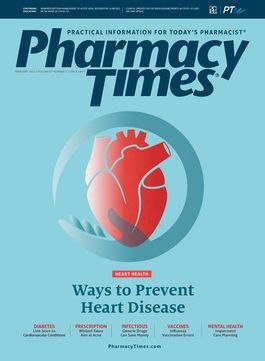Publication
Article
Pharmacy Times
Help Process Insurance Claims and Payments
Author(s):
Facilitate patient access to needed medications while gaining valuable experience working with payers in the complex health care system.
Hold music is the bane of the pharmacy technician’s existence.
Between answering questions about refills and filling prescriptions, techs endure hold music as they wait for an insurance company representative to answer; sometime it even is playing on speaker phone as the tech dashes across the pharmacy to quickly look at what the National Drug Code is for a product that keeps changing manufacturers.
Learning how to deal with hold times and calls to health insurance companies is important. Not only do techs help patients gain access to much-needed medications, they also get valuable experience working with payers in the complex health care system.
Techs have intimate experience with processing claims and payments, as well as communicating with prescriber offices about patient care. Each time a prescription is filled, a claim is made and payment is confirmed.
Techs experience many utilization management and coverage determinations put in place by payers. These include the following:
- Drug tiers. These are the cost levels of a prescription drug list. Techs deal with this when a copay is higher for a brand name medication. Usually, patients ask why they must pay more than they would for a generic equivalent and request that the tech fix the situation.
- Formularies. This is also known as a prescription drug list. Each time an insurance company rejects a medication and offers alternatives, the alternatives are typically “preferred” or on the payer’s formulary.
- Quantity limits. This includes calculating the correct number of days for a cream or eye drop or determining if there’s a special case, such as a limit to how many pills per month are covered by the insurance company.
- Prior authorization. This is the administrative game of tag for prescription coverage. Prior authorizations are a utilization management process in the health care system that requires additional documentation and clinical support for payer approval.
- Step therapy. This is a required drug trial before another, likely more expensive, medication will be covered by health insurance. In the pharmacy, it usually appears as a denial with a prior authorization requirement or suggested alternatives.
Techs communicate with insurance companies, process claims, and explain what is happening as the patients waits patiently, or sometimes impatiently, in front of them. It is a high-pressure position, especially when the tech has to be the bearer of bad news with claim denials.
These claim experiences not only help ensure payment for the pharmacy but also open many doors to additional opportunities for techs. There are numerous positions becoming available for certified pharmacy technicians (CPhTs) to handle prior authorizations and billing for health systems, insurance companies, mail order and specialty pharmacies, and pharmaceutical manufacturers.
Understanding insurance claims can lead to positions
with national impact.
Ashley Benjamin, MHA, BS, PACS, CPhT, is a field access specialist at AbbVie in Cape Coral, Florida. She travels to provider offices to educate employees about billing and coding information and payer updates. By doing this, she helps patient populations overcome roadblocks to receiving necessary treatments.
Benjamin began her career as a CPhT in an oncology practice.
“As a pharmacy technician, I served as a patient advocate by helping patients to obtain their medication through the prior authorization process,” she said. “I gained the knowledge, understanding, and training to be able to collaborate with physician’s office staff members to bridge the gaps for patients and get them access to therapies in a timely manner.”
With oncology treatments, time is an important factor in submitting a prior authorization and gaining approval for a therapy.
“My experience as a pharmacy technician helps me in my current role, as I am now able to educate pharmacy staff members and providers in understanding prescription processing and payer policy changes on a local and national level,” Benjamin said.
Another form of career success can be seen in positions such as billing specialists, financial navigators, and prior authorization techs.
Eva Urey, CPhT, PACS, is a certified pharmacy billing specialist at Klamath Tribal Health & Family Services in Klamath Falls, Oregon. She previously worked as a human resource manager and tech at a large retail company. Urey also worked for 4 years as a tech in 2 pharmacies, “opening 1 and closing the other.”
She was offered her current job when the previous tech left. With 2 days of training with the previous tech and motivation to advance in her role, Urey began prior authorization processing. What started as a daily report turned into a full-time position. In her role, Urey reduces the workload of the medical staff and pharmacists.
“It helps being a certified pharmacy technician and having an advanced understanding of third-party payers, claims processing, and adjudication of claims with my prior authorization certified specialist certification,” she said. “I can identify formulary coverage alternatives when completing prior authorizations.”
Urey’s average day consists of investigating all the cash claims or claims that did not go through insurance the previous day. She plays a pivotal role in reducing costs and staying within budget. “I get excited [about] every successful paid claim and [prior authorization] knowing that I have helped that patient receive their medication,” Urey said.
For Urey, being a certified pharmacy billing specialist means “being able to work a job I love that supports my family.”
AMANDA DEMARZO, PHARMD, MBA, PACS, is associate director of patient access for the National Board of Prior Authorization Specialists, an affiliate of the Accreditation Council for Medical Affairs company in Oradell, New Jersey.







